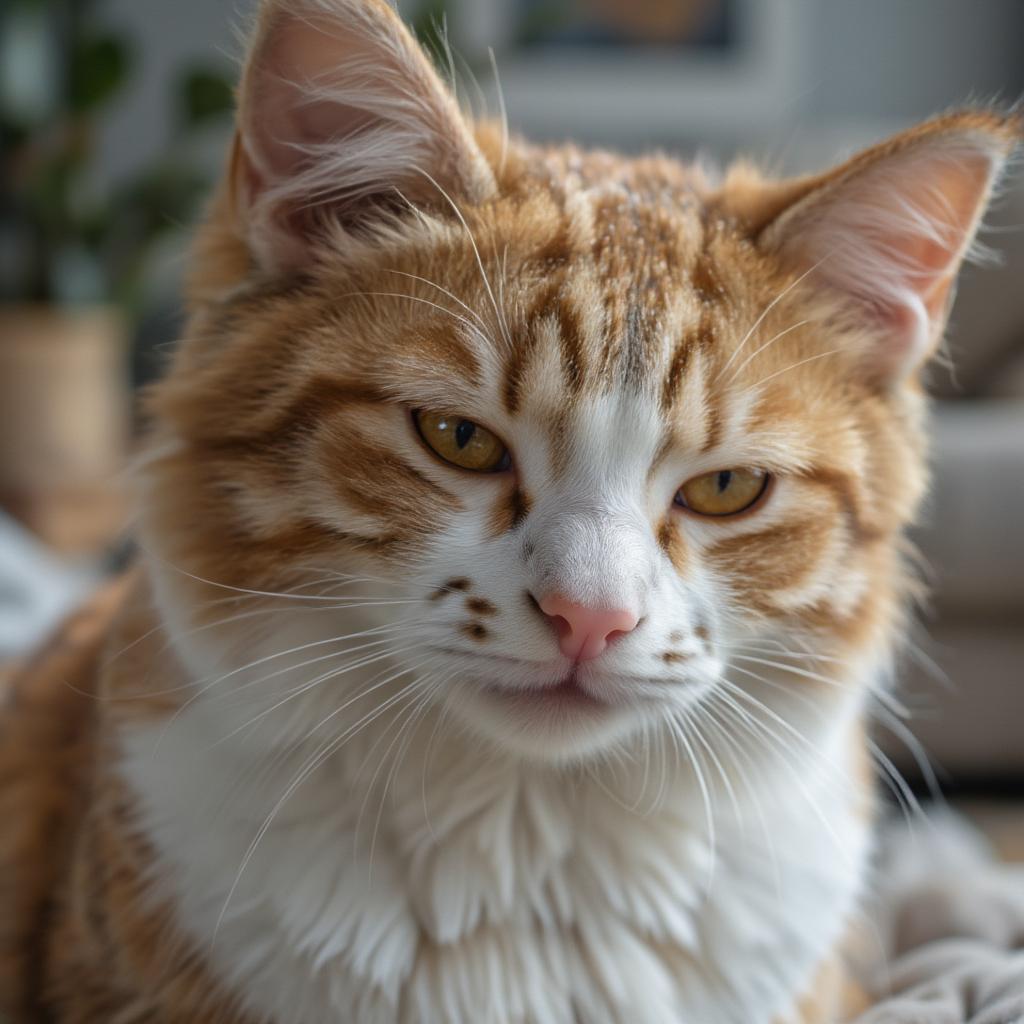Understanding your feline friend can sometimes feel like deciphering a secret code. You provide food, shelter, and endless head scratches, but does your cat truly appreciate your efforts? How can you tell if your cat loves you? This article will explore the subtle, and sometimes not-so-subtle, ways cats demonstrate their affection.
Decoding Feline Affection: Signs Your Cat Admires You
Cats express love differently than humans, or even dogs. While a dog might shower you with enthusiastic licks and tail wags, a cat’s love is often expressed through more nuanced behaviors. Learning to recognize these subtle signs can deepen your bond with your furry companion.
- Slow Blinks: A slow blink from your cat is the equivalent of a kiss. If your cat looks at you, slowly closes their eyes, and then opens them again, they’re sending you a message of trust and affection. Try slow blinking back – you might be surprised at the response.
- Head Boops (Bunting): When your cat rubs their head against you, they’re not just marking you with their scent, they’re also depositing pheromones, chemical signals that communicate familiarity and affection. It’s a sign that they consider you part of their inner circle.
- Purring: While purring can sometimes indicate stress or discomfort, a soft, rumbling purr, especially when accompanied by other affectionate behaviors, is often a sign of contentment and happiness. Your cat is telling you they feel safe and loved in your presence.
- Kneading: This behavior, often referred as “making biscuits,” is a throwback to kittenhood, when kittens knead their mother’s belly to stimulate milk flow. In adult cats, kneading signifies deep relaxation and contentment, often associated with feelings of love and comfort.
 Cat Slow Blinking: A Sign of Affection
Cat Slow Blinking: A Sign of Affection
Does My Cat’s Behavior Really Mean Love? Understanding the Nuances
While these behaviors are often strong indicators of affection, it’s important to consider the context. For instance, a cat meowing incessantly could be seeking attention, but not necessarily expressing love. Similarly, a cat following you around might simply be curious or hoping for a treat. Observing the combination of behaviors and the specific circumstances will provide a more accurate understanding of your cat’s emotions. How do you know when somebody loves you, even if they’re a cat? Look for consistent patterns of affection.
- Tail Position: A high, slightly curved tail often indicates a happy and confident cat, while a tail held low or tucked between the legs might suggest fear or anxiety. A tail that twitches or thrashes can signify excitement or irritation.
- Vocalizations: Cats have a wide range of vocalizations, from soft meows to loud yowls. Pay attention to the tone and context to understand what your cat is trying to communicate. A soft chirp or trill is often a greeting or an invitation to interact.
- Grooming: Cats are meticulous groomers, and if your cat licks you, it’s a sign of affection and acceptance. They’re treating you as they would another cat in their social group. Think of it as a tiny, sandpapery kiss. Why do we love dogs? Perhaps for their overt affection, but cats offer a quieter, more subtle kind of love.
Building a Stronger Bond With Your Cat
Even if your cat isn’t showering you with obvious affection, there are ways to strengthen your bond. Playing with your cat regularly, providing them with a stimulating environment, and respecting their need for personal space can all contribute to a more loving relationship. Why would he love me, you might wonder, if I’m not a cat? Because you provide care, security, and a playful environment.
- Playtime: Engage your cat in interactive play sessions using toys that mimic prey, such as feather wands or laser pointers. This not only provides exercise but also strengthens the bond between you and your cat.
- Environment Enrichment: Provide your cat with vertical space, scratching posts, and hiding places to satisfy their natural instincts. A happy and secure cat is more likely to express affection. What do I love about my girlfriend? Her ability to make me feel safe and secure, much like a cat feels in a comfortable environment.
- Respect Their Boundaries: Don’t force interactions with your cat. Allow them to approach you on their own terms. This will build trust and encourage them to show affection in their own way. How to know if your married ex still loves you is a different matter entirely, but understanding feline affection can offer insights into the complexities of love in general.
Conclusion: Recognizing the Unique Language of Cat Love
Learning how to tell if your cat loves you requires understanding their unique language of affection. While they may not express love in the same way as humans or other animals, their subtle gestures, purrs, and head boops are clear indicators of their deep affection. By paying attention to these signs and respecting their individual personalities, you can build a strong and loving bond with your feline companion.
FAQ
- Do all cats show affection in the same way?
- What if my cat never purrs? Does that mean they don’t love me?
- How can I encourage my cat to be more affectionate?
- Can cats sense when their owners are sad or stressed?
- Is it normal for cats to bite or scratch even when they seem affectionate?
- How can I tell the difference between a cat wanting attention and a cat showing affection?
- Can cats be jealous of other pets or people?
When you need help, contact us at Email: contact@daiduongtranhba.com, address: Michigan Ave, Suite 3100, Chicago, IL 60611, USA. We have a 24/7 customer service team.

